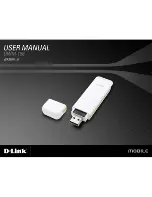
Introduction to the USBtoUSB
The USBtoUSB Keyboard/Mouse device is a product which emulates a
USB Com Port on one computer and a USB keyboard and mouse on
a target computer. Commands sent from the computer with the Com
Port produce keyboard and mouse actions on the target computer.
The USB target port of this device can be connected to any USB port
that supports a standard USB Keyboard and Mouse. No special drivers
are required. The USBtoUSB Com Port also uses standard drivers.
The USBtoUSB is configurable for three different modes of serial data
translation. This unit is shipped in ASCII mode, but can be changed to
other modes using the supplied “USBtoUSB.EXE” program.
Translation Modes of the USBtoUSB
The USBtoUSB receives data from it’s USB Com Port and translates
that data into USB keystrokes and mouse action on another computer.
USB Com Port data can be translated using one of three modes. ASCII
Mode, Extended ASCII Mode, or Key Number Mode.
ASCII MODE
(Default Mode)
The ASCII mode is the default factory setting for the method of data
translation. In this mode, printable ASCII characters are sent to the
USB Com Port as a one byte value, each in the range of 0x00 to 0x7F
(0 to 127 decimal). Every character received in this mode generates it’s
corresponding USB keystroke on the computer where the USBtoUSB
KBD/MOUSE port is connected. See the ASCII table on the next page
for a list of the characters recognized and translated for ASCII mode.
Example: If a one byte value of 0x41 (decimal 65) is sent to the USB
Com Port in this mode, a capital “A” character will be produced as a
keystroke on the target computer’s USB port.
ASCII characters sent to the Com Port which are out of the 0x00 to
0x7F range will be ignored in this mode.
3
The configuration may also be read from the USBtoUSB unit by
selecting the button “Read From USBtoUSB”. The configuration in the
USBtoUSB attached to the computer’s USB port will be read into the
configuration parameters on the screen.
Once a configuration has been created, it is recommended that it be
stored on the computer so that it may be recalled at a later time. Use
the “File” menu to perform saving and opening of configurations.
Saving the configuration to a file on the computer provides an easy
way to be able to recall the same configuration at a later time to save
into additional USBtoUSB units.
16
Custom USBtoUSB Options
We offer special modifications to our standard USBtoUSB unit to conform to your exact
specifications. Customizations include different translation modes, different enclosure,
etc. just to name a few options. Let us know if you have special requirements. Please
call or email with your specific custom needs.
Note about the X and Y size settings.
The information about the
screen size is important for controlling the cursor with the mouse control
packets. The program will show the current settings on the machine
where the USBtoUSB.exe program is being run.
Assuming the program is being run on the target machine, no changes
are required to the values the program populates. If the USBtoUSB will
be run on a different computer, change the X and Y settings to match
that system if they differ from the target machine’s screen resolution.




































